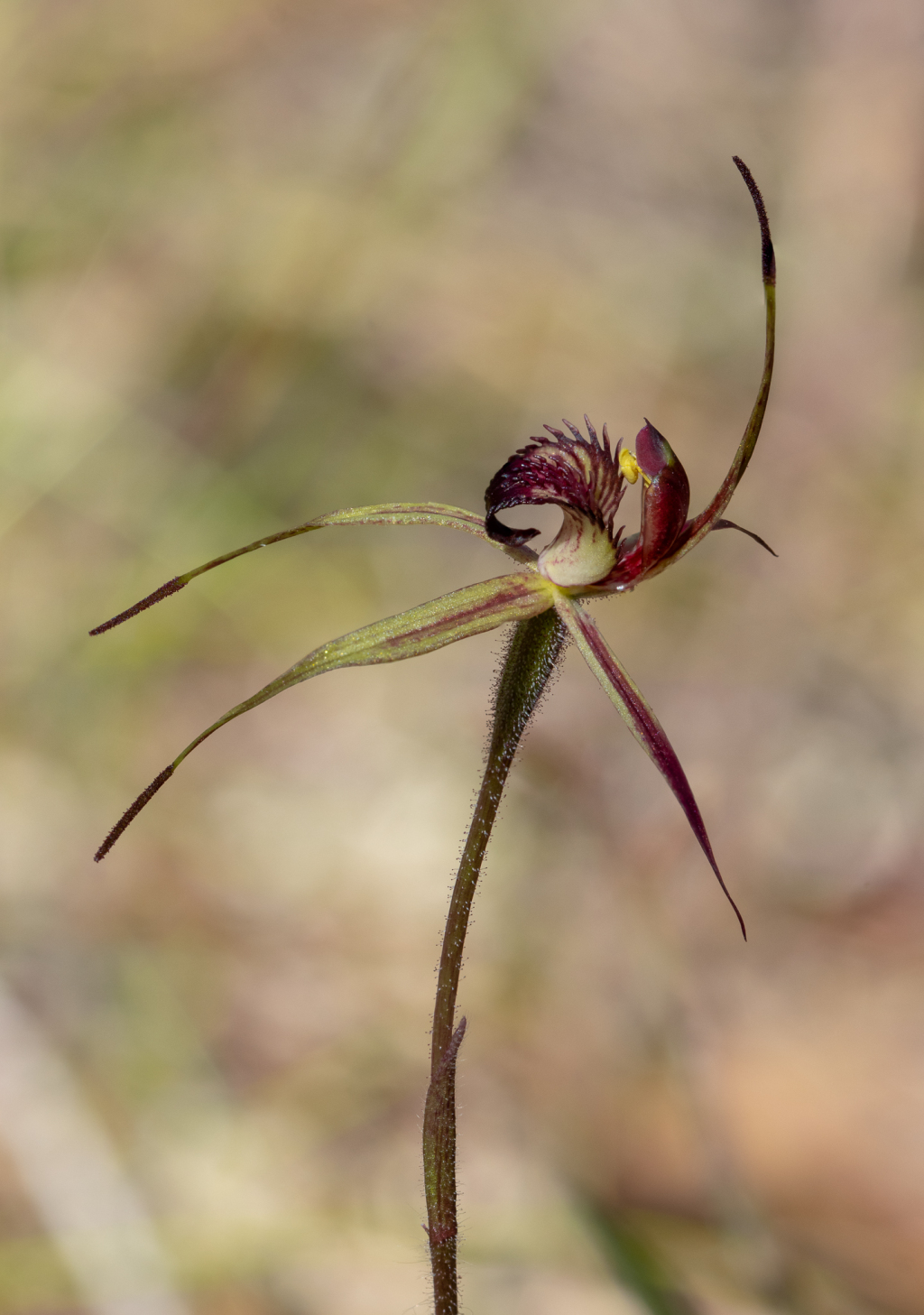Caladenia ampla
(D.L.Jones) G.N.Backh.Flowering plant 15–22 cm tall. Leaf 6–10 cm long, 5–7 mm wide. Flowers solitary (rarely 2); perianth segments 2.8–3.7 cm long, cream to yellowish with reddish streaks, sometimes wholly reddish; dorsal sepal 3–3.7 cm long, 2.5–3 mm wide, oblong-lanceolate basally, tapered and ending in a thickened osmophore 6.5–9 mm long; lateral sepals 3–3.7 cm long, 4–5 mm wide, ovate-lanceolate basally, tapered and ending in a thickened osmophore 6–8 mm long; petals 2.8–3.2 cm long, 2–3 mm wide, narrow-lanceolate basally, tapered to an acuminate tip, sometimes with an apical cluster of glands. Labellum curved forward with apex recurved, lamina broadly ovate, unlobed or obscurely 3-lobed, 14–16 mm long, 10–12 mm wide (when flattened), cream with prominent red veins and dark red apex; marginal calli in 9–12 pairs, 1–2.5 mm long at base, reducing in length distally; lamina calli in 4 rows, extending half to two-thirds of way to labellum apex, linear to foot-shaped, c. 2 mm long at base of lamina, decreasing in size towards apex. Flowers Sep.–Oct.
Gold. Endemic to Victoria where known only from the western goldfieds (St Arnaud, Deep Lead) in mallee scrub and woodlands on well-drained gravelly soils.
This poorly known taxon is part of the Caladenia reticulata complex, which was recently split up into a multitude of segregate species.
 Spinning
Spinning
